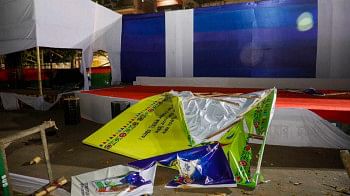Communal view of Morning News in 1952
The above headlined column of Syed Badrul Ahsan, published in this daily recently, enriched my knowledge about the attempt of the Morning News for colouring the killing incidents on February 21, 1952 with communal impulse. The column says that the Morning News had been trying to spread the falsehood of the Language Movement being the doing of Indians and communists. It even reported falsely that a large number of dhotis, the attire worn by Hindus, had been found in the city.
I would like to refer to Suranjan Das's assessment in his book “Communal riots in Bengal, 1905-1947” published by Oxford University Press, 1991. It analyses that by the turn of twentieth century, Bengal had one of the largest concentrations of Muslims in India as well as one of the worst records of Hindu-Muslim conflict. The Bengali Muslims were among the first to be organised politically to voice their rights as Muslims. Bengal was the only state where the Muslim League managed to form relatively stable ministries in the two crucial decades preceding the end of British rule in India.
However, communalism played a vital role in constituting important landmarks in the history of Bengal and even today's Bangladesh. Now it is clear that the communal politics before and after 1947 was quite different. Sorry to say that its actual cruel face was unmasked during the period of the Language Movement. And the above mentioned report of the Morning News is a documented sign of that.

 For all latest news, follow The Daily Star's Google News channel.
For all latest news, follow The Daily Star's Google News channel. 



Comments